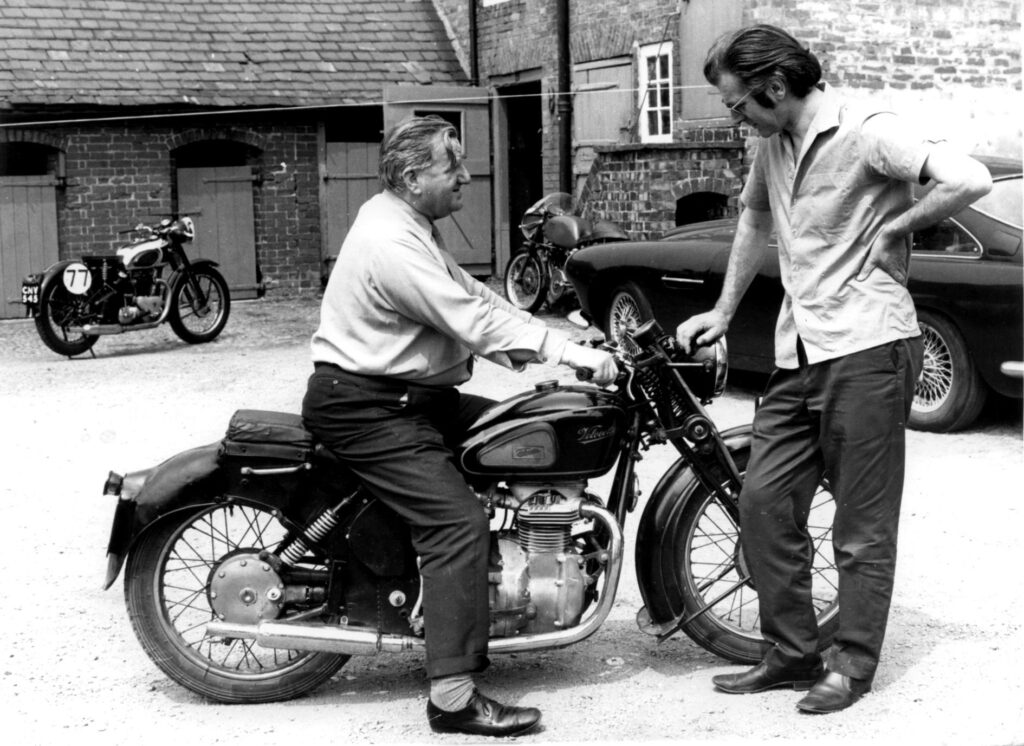By Dennis Quinlan
The legendary Australian engineer Phil Irving, or “P.E.I.” to fans, is best known for his design work in collaboration with Philip Vincent to create the immortal Vincent V-twins in the 1930s and 40s. Less well known is his work at the Velocette factory to develop new designs during the tumult of the 1930s. Irving in fact worked twice at Veloce Ltd in the period 1930-1942, where he assisted in design and alterations to existing models in the Velocette range (the ‘K’ overhead-camshaft and ‘M’ pushrod series machines). This work was augmented in 1938, when he was given the brief to design a road-going version of Veloce’s new 500cc twin-cylinder supercharged racer, called “The Roarer” by factory development engineer Harold Willis. The Roarer was developed by Veloce designer Charles Udall, who did his best to ready the new design for the 1939 IOM Senior TT, and while the racer was tested by Stanley Woods at the TT, it did not compete as certain issues [ie, glowing red-hot spark plugs – ed.] had not yet been resolved.


The engine would start at “the brush of a carpet slipper”…!
It was not quite so with the Model O, but two or three kicks saw me ride off to catch up with the others. The seat height is a little on the low side when compared to the many Velocettes I’ve owned. When I took off it was smooth, though the steering seemed a little heavy in comparison to the light and nimble TT winner I’d been on, and if you’ve ever ridden a 1920s Velocette, you’ll understand. The heavier steering came to prominence on the first left-hander I rushed into, and I thought – crikey don’t fall off! Acceleration was “adequate”… I wasn’t about to thrash it and the gearbox had a BMW feel as the Model O gearbox similarly runs at engine speed, but with a multi-plate clutch, the gearchange wasn’t clunky. The brakes were good and in no time I’d settled into the ride, ending up too soon back at Ivan’s, where I let the machine idle to muse at my good fortune and pleasure of riding such a special machine.


Summarising: the thrill of riding a one-off prototype is something I’ll remember into my dotage.







Anything Irving stuck his hands into is bound to be at the very least … good !
R&D project for a Museum.
Then there were times where a company had to understand how to make business survive choosing for simpler production products.